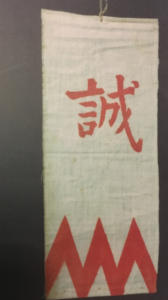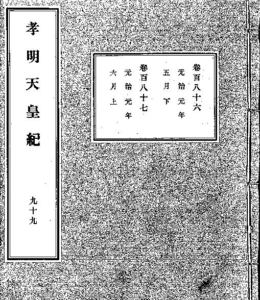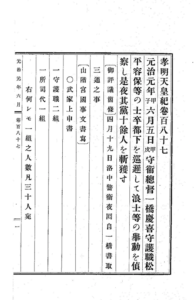
I’ve been rewriting the complicated and complex story of the Shinsengumi’s attack on the Ikedaya in the summer of 1864: at once fascinating and enthralling – and (depending on presentation) dramatic!
“Think big! Create! Persevere!”


I’ve been rewriting the complicated and complex story of the Shinsengumi’s attack on the Ikedaya in the summer of 1864: at once fascinating and enthralling – and (depending on presentation) dramatic!
“Think big! Create! Persevere!”
Some “light reading” on a Sunday afternoon.


The official chronicle of Emperor Kōmei (Kōmei Tennō-ki, published 1906 by Imperial Household Ministry), volume 187, opens with the attack on outlaws in Kyoto by Bakufu security forces on the fifth day of the Sixth Month of the Japanese calendrical year that corresponds to 1864. The obvious is not stated in the heading: i.e., no mention of the names Shinsengumi or Ikedaya.

Making progress. But I wonder:
Am I in the middle of writing the next Shinsengumi book?
OR
Is it in the middle of my writing?

A few years after the Shinsengumi was formed in Kyoto in the spring of 1863, people in Hijikata’s native Hino could hardly believe reports of the bloodletting in Kyoto at the hands of the vice-commander because “he was such a gentle person,” according to one writer. But “Toshizo was a different man with a real sword in hand.” Once when Hijikata briefly returned to Hino, he reportedly told a gathering of family and friends that the blade of one of his swords had “corroded” from overexposure to human blood. [from Shinsengumi: The Shogun’s Last Samurai Corps]
[The photograph of Hijikata Toshizo is in my “Shinsengumi: The Shogun’s Last Samurai Corps,” courtesy of the descendants of Sato Hikogoro and Hino-shi Furusato Hakubutsukan Museum.]

Shinsengumi Commander Kondō Isami rose to prominence after his men assassinated his rival Serizawa Kamo.
This is where I’m at now.
“Think big! Create! Persevere!”